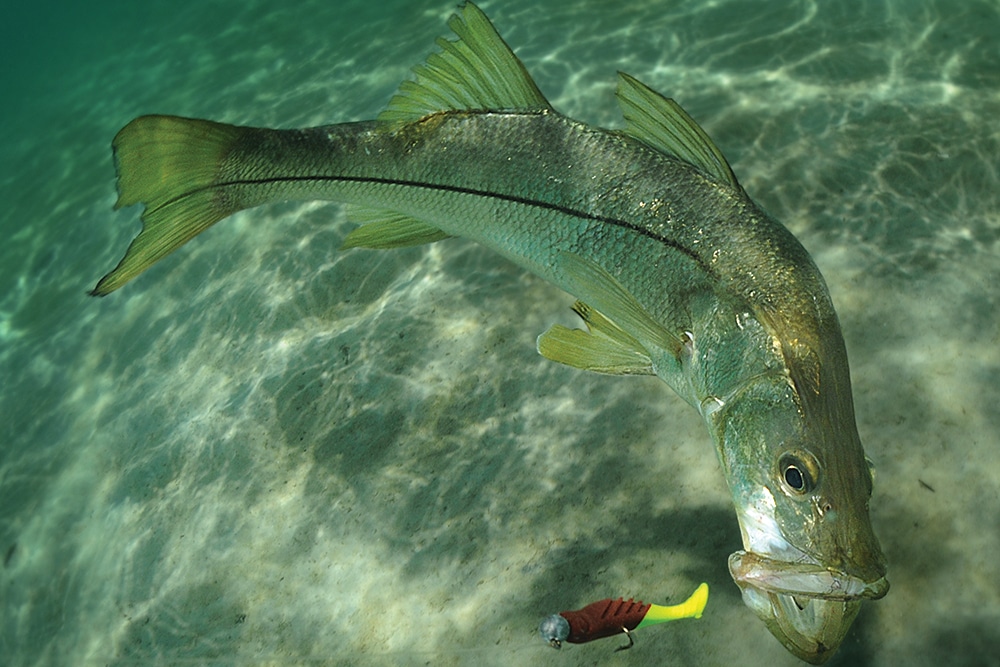
Perfect Presentation
With the plethora of soft plastic lures available today, soft baits are utilized in all but the most specialized fisheries. And even then, there’s probably an angler revolutionizing the fishery right now with a homebrew soft-bait rig. In fact, I know of one particular captain who catches swordfish in the northeast canyons by jigging 10-inch soft baits at night. That’s why it’s so important to know how to fish soft plastics in saltwater.
Because local and national manufacturers make soft baits so readily available to anglers, competition is fierce to produce the most lifelike imitators in terms of design, body and appearance. That leaves plenty of options for you and me.
Sport Fishing interviewed pros and lure manufacturers about their favorite soft-bait setups; from there, we whittled it down to 10 unique rigs that maximize action on soft baits. This feature is not going to proclaim the best soft plastic lures for saltwater, but will instead show you how to rig soft plastics for saltwater. Chances are at least one of these rigs will produce on your next trip.
Here are some great options for how to rig swimbaits and other soft plastic lures for saltwater.
No. 1: Sebile
Capt. Jeff Brooks, jeffbrooksfishing.wordpress.com
Orlando, Florida
Sebile’s Magic Swimmer soft bait is jointed into three segments for lively action but swims best when rigged to a worm hook. The hook entrance and exit points are rigged into the mold for precise alignment. Sebile’s soft weights slide up and down the length of the shaft to allow for weight forward or rear presentations. Or take the weights off completely and tie the bait to a Carolina rig. To rig this in an unconventional manner, Capt. Jeff Brooks slides the soft weights toward the throat of the hook and secures them with a drop of superglue. Perfect for skipping underneath mangroves and docks.

No. 2: Z-Man
Capt. Scott MacCalla, redfishonfly.com
Titusville, Florida
Capt. Scott MacCalla rigs Z-Man StreakZ 3.75 soft baits to catch juvenile tarpon. First, he wraps thread around the shank of a Gamakatsu SL12S 1/0 hook. Then, he threads the soft bait onto the hook, stopping just before the wrapped threads. That’s where he adds drops of superglue and pushes the bait all the way to the hook eye. The wrapped thread gives something to which the glue and bait can adhere.
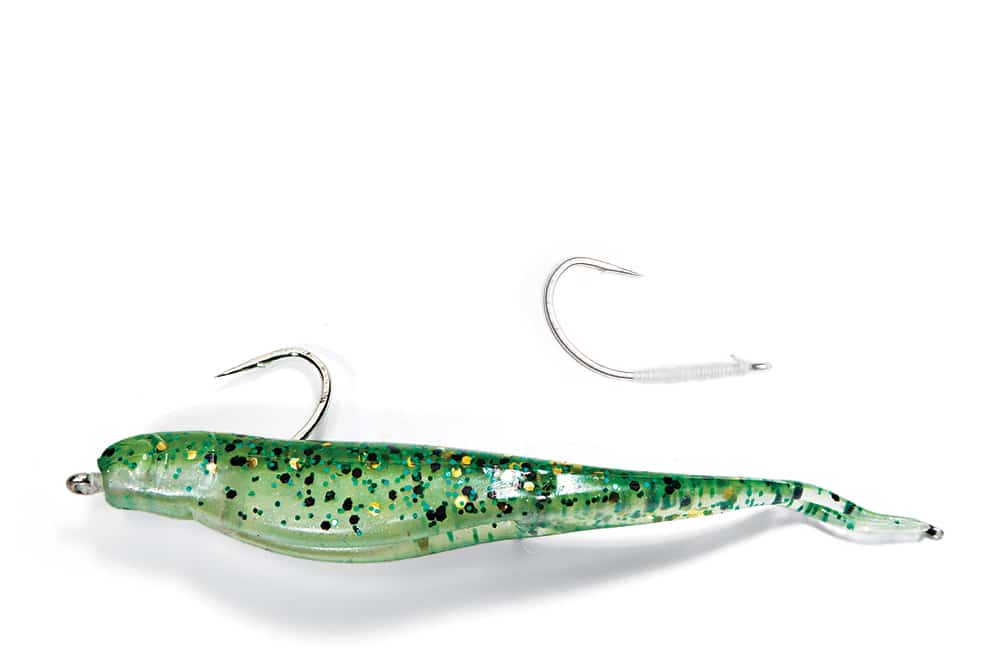
No. 3: Hogy
Capt. Tyler Nonn, twcharters.com
Elkton, Maryland
Capt. Tyler Nonn prefers to fish with a 10-inch Hogy when sight-fishing for finicky striped bass along the beaches. He uses a 6/0 VMC circle hook that connects to the front of the Hogy with a bait keeper. With no hook in the bait to restrict action, the rig “allows an angler to talk a fish into biting,” he says. When working this bait, Nonn makes three big twitches with the rod tip and then a few quick cranks.

No. 4: MC Swimbaits
Erik Landesfeind, facebook.com/elandesfeind
Southern California
Eric Landesfeind rigs MC Weedless swimbaits to a 9/0 TroKar Kelp Trick ½-ounce weighted hook. The hook’s spring is screwed into the exact center of the nose to keep bait aligned with the hook. The bait’s belly is slit open to create a hook pocket. When a fish bites the bait, that hook slides into the body of the bait and allows the hook point to pop out. New TroKar Kelp Trick Hooks feature a secondary barb to keep lip-hooked fish from shaking the hook, especially if there’s slack line in heavy cover. The second barb sits close to the hook point, but not too close to adversely affect in-mouth hook-sets.
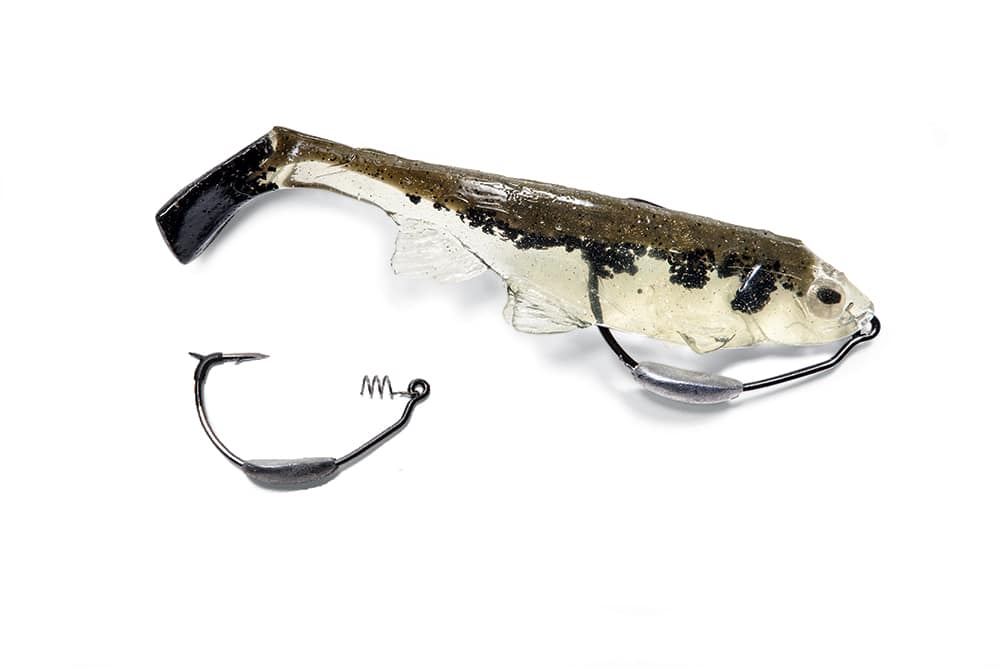
No. 5: Berkley Gulp!
Capt. Bobby Abruscato, ateamfishing.com
Dauphin Island, Alabama
To rig the Berkley Gulp! Doubletail Swimming Mullet, Capt. Bobby Abruscato modifies a traditional popping-cork rig. He adds about 2 feet of leader to a cup-shaped cork, and then ties on a homespun weighted worm hook in lieu of a jig head. The shank angles slightly at the hook eye where Abruscato adds a slug of lead to weight the hook. Comparable hooks to his handmade version include the Mustad Power Lock Weighted and Owner Weighted TwistLock (remove the locking mechanism). Thread the stinky Gulp! onto the hook so the point protrudes just before the double tail. Other Gulp! baits work too, including the new Gulp! Hollow Shrimp.
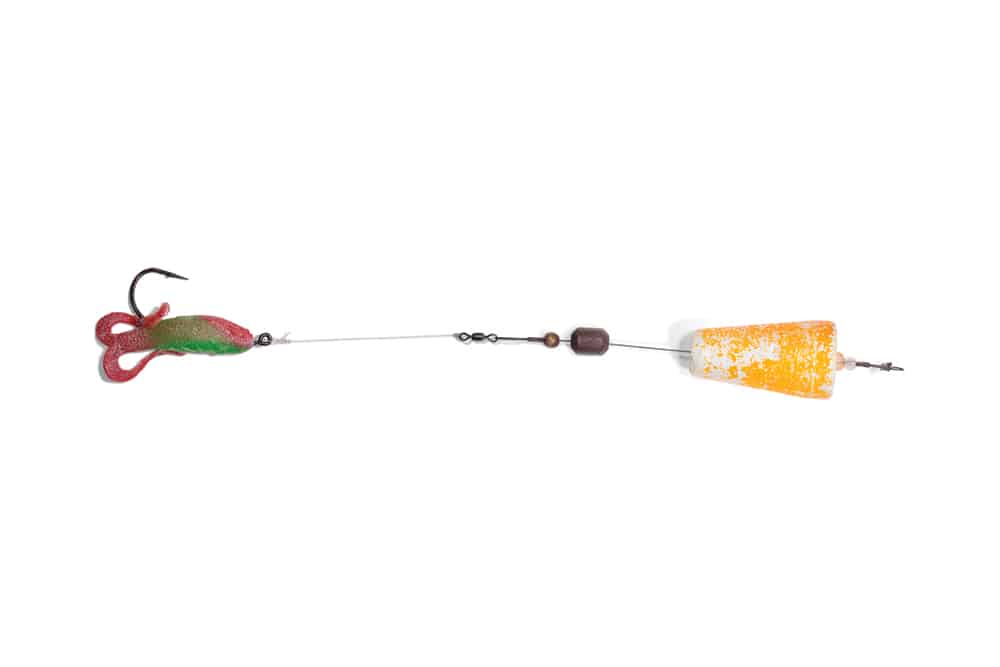
No. 6: Savage Gear
Capt. Eric Davis, verobackcountry.com
Vero Beach, Florida
Capt. Eric Davis doesn’t need a hook to be successful with his soft-bait rig. Savage Gear‘s 4Play soft bait works like a real mullet when attached to a dredge. Using No. 15 wire, he makes a sharp V at the end of his wire trace, then slides it into the soft-bait body. The V holds the wire inside the bait. The other end of the wire gets a loop with a haywire twist. This loop is used to attach the bait to your dredge. Use eight of these baits on the dredge, plus one natural mullet.
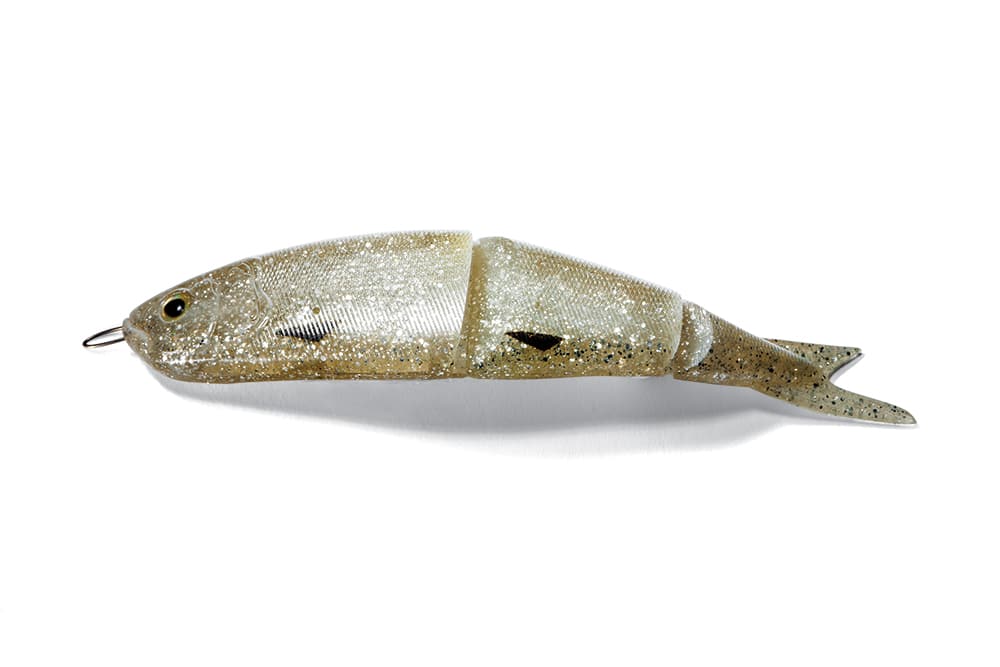
No. 7: Almost Alive
J.W. Pender
Harkers Island, North Carolina
To rig the Almost Alive Menhaden, J.W. Pender utilizes 4/0 treble and live-bait hooks. Use the two hooks and wire to tie a stinger rig that matches the length of the menhaden soft bait, about 4 inches. All connections include haywire twists. Insert the live-bait hook into the lower jaw out the top of the head, then pierce the base of the tail with the treble. Using this artificial offering mimics the popular method of slow-trolling for kingfish with natural bait.
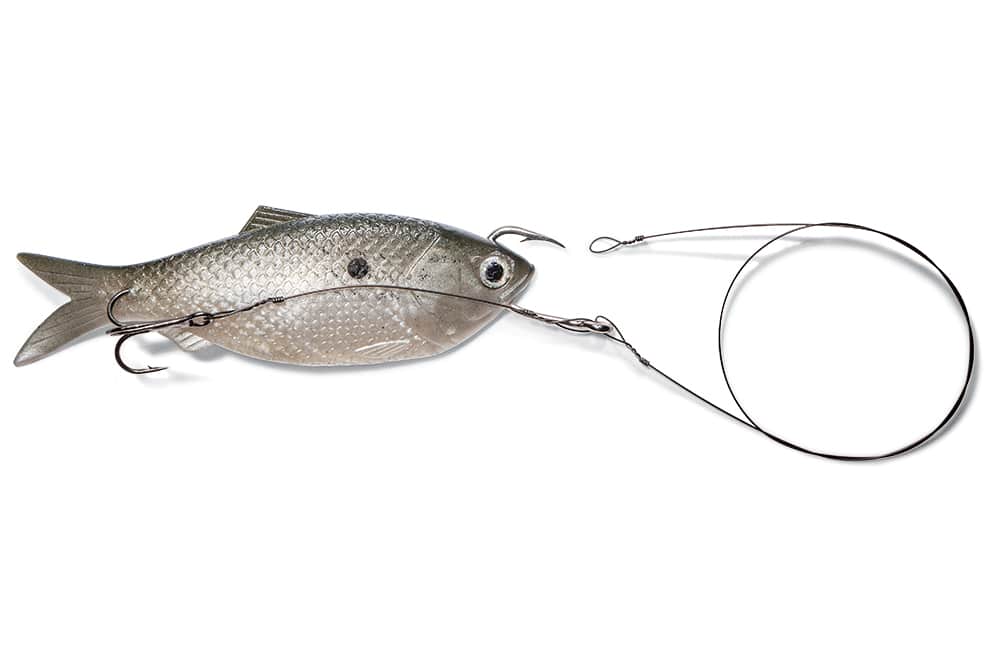
No. 8: Williamson
Capt. Mike Weinhofer, fishnkw.com
Key West, Florida Keys
Capt. Mike Weinhofer fishes soft plastics to capitalize on wahoo bites when trolling 2 to 5 knots. He fishes light drags and lets the ‘hoo make a big first run with the boat in gear. Though most Williamson soft baits come pre-rigged, he outfits the Williamson Live Mackerel with a short piece of No. 10 wire near the swivel. Other wahoo will attack the swivel, even skirts in front of baits, which leads to cutoffs. The most important item to take when offshore fishing soft plastics is a bottle of superglue. “I have reglued baits that look like Frankenstein’s creations, but I wouldn’t trade them,” he says.
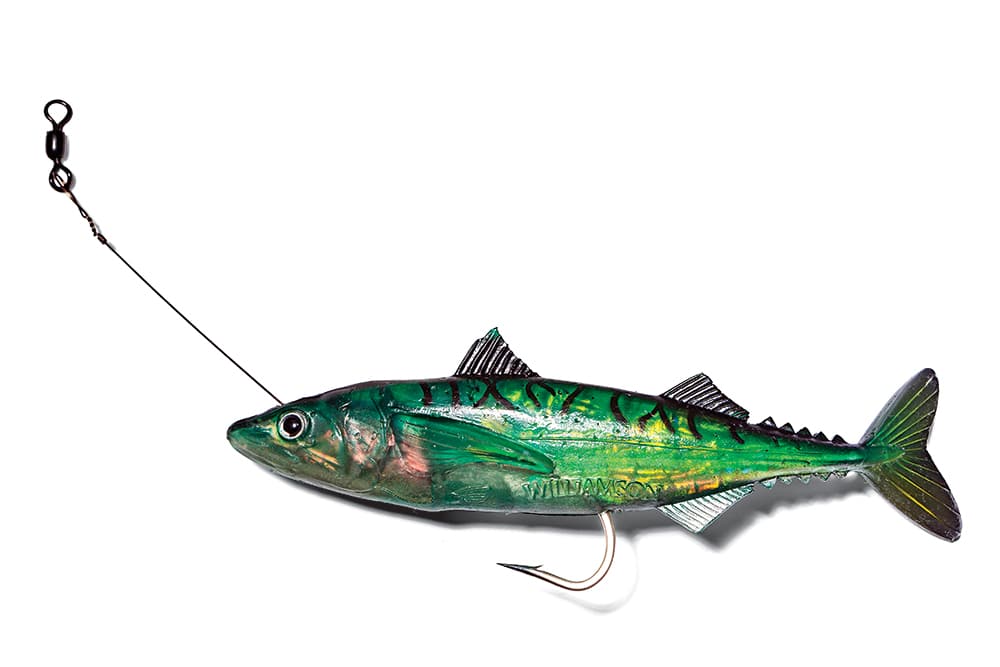
No. 9: D.O.A.
Capt. Rick De Paiva
Fort Myers, Florida
Capt. Rick De Paiva turns his D.O.A. Shrimp backward and cuts off the tip of the tail before rigging to an Owner TwistLock 3/0 worm hook. A spiral locks the tail section in place at the hook eye. The worm hook itself fits perfectly into a hole meant for the factory-rigged hook. This way, the shrimp casts farther and kicks away from prey naturally, plus it’s rigged weedless to slide through sea grass without fouling. De Paiva inserts a rattle into the nose of the bait.
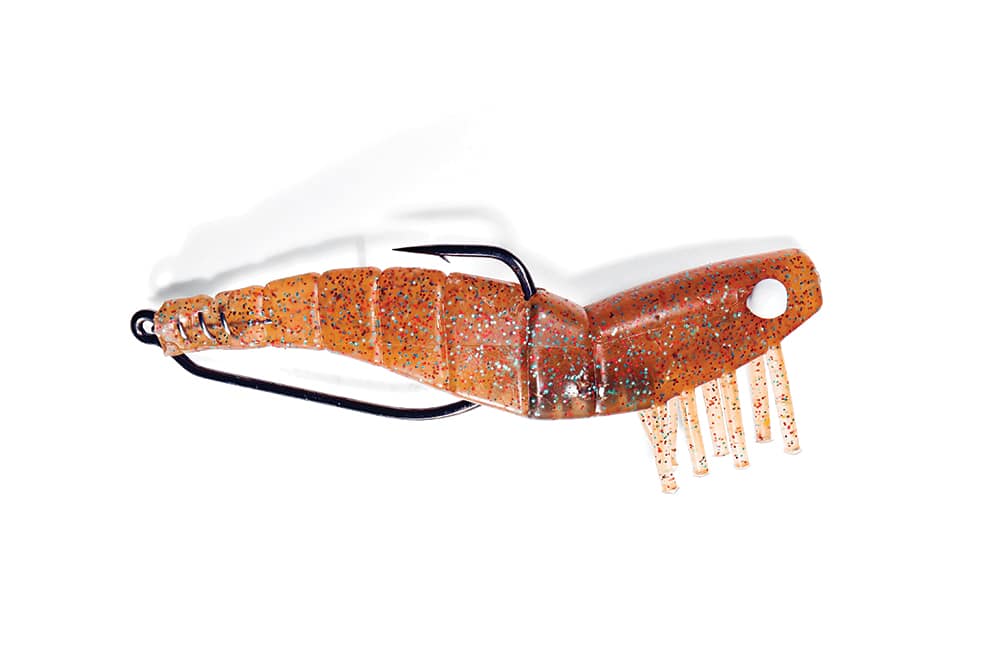
No. 10: MirrOlure
Capt. Jeff Poe, biglakeguideservice.com
Lake Charles, Louisiana
Capt. Jeff Poe inserts the hook point of his 1⁄16- to ½-ounce jig head just above the center nose of MirrOlure’s Lil John soft bait, making sure the darkest side is facing up. Stay away from crooked baits or rigs; the bait should always swim perfectly straight. Poe pushes the point of the hook into the bait until it reaches the straight part of the shank, and then brings the point out of the bait, finishing by sliding the bait all the way to the lead head. Poe ties 20-pound-test leader to the jig head with a nonslip loop knot









